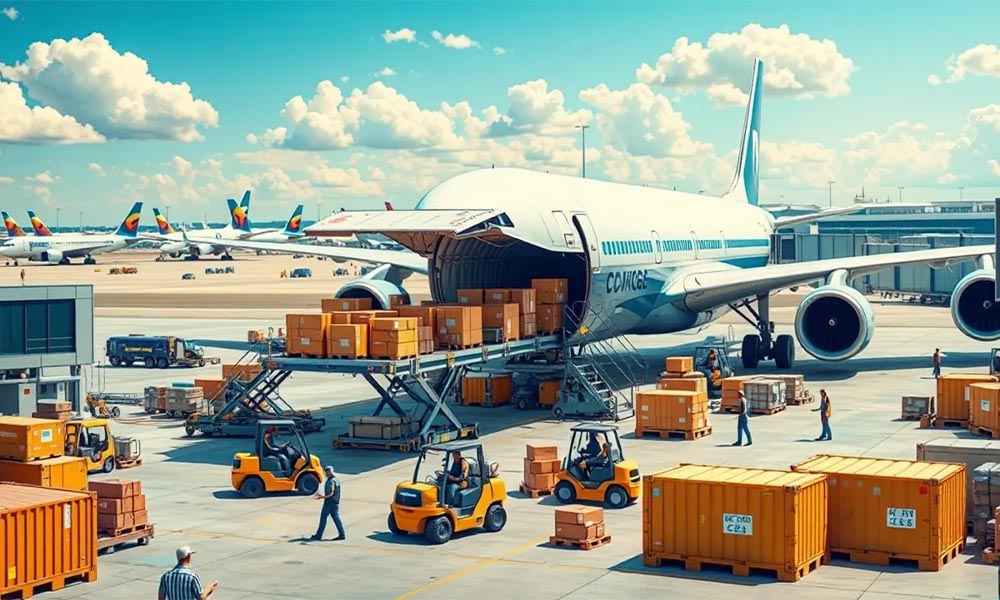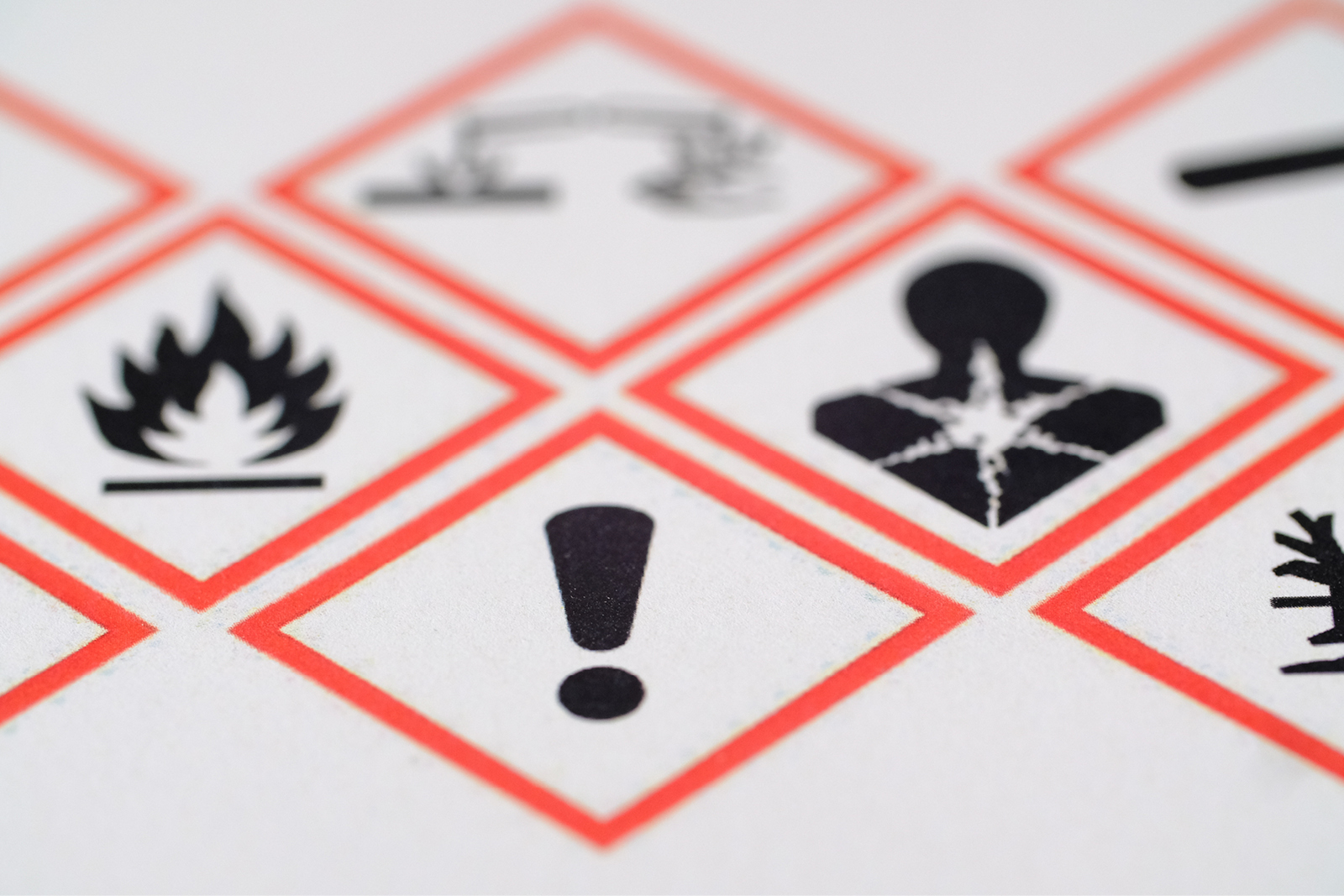What is Hazardous Cargo? MSDS and Air Transport of Dangerous Goods
فهرست مطالب:
ToggleHazardous cargo in international transport refers to materials and products that, due to their specific properties, can pose risks to humans, the environment, or transport equipment. These goods require special attention to international laws and standards to prevent potential dangers.
Hazardous Cargo Overview
According to the United Nations (UN) classifications and the International Dangerous Goods Transport Code (UNDG), each hazardous item is assigned a UN number, identifying the type of risk, packaging requirements, and necessary safety measures for its transport. These numbers serve as the primary guide for safely managing hazardous goods worldwide.
This category includes substances like toxic chemicals, radioactive materials, explosives, compressed gases, flammable materials, biological hazards, and industrial waste. Adhering to safety standards for packaging and labeling these items is crucial, and transport companies must hold valid permits for handling these goods.
Safety documents like the Material Safety Data Sheet (MSDS) play a key role in informing about potential risks and safe management strategies. These documents ensure that essential information is provided to handle emergencies accurately and transparently. Therefore, transporting hazardous goods requires expertise, experience, and strict adherence to international regulations to protect human health, the environment, and prevent accidents.
Types of Hazardous Goods Based on UN Codes
Hazardous goods in international transport are classified into nine primary categories based on their risk type, safety measures, and transportation conditions. These categories include:
- Explosives (Class 1): Solid or liquid substances capable of violent chemical reactions that generate gas, heat, and pressure, posing an explosion hazard. Transporting these materials is subject to stringent regulations due to high risk.
- Gases (Class 2): This category includes flammable, non-flammable, toxic, or corrosive gases, requiring specific conditions for packaging and safety.
- Flammable Liquids (Class 3): Liquids with a flashpoint of 60°C or below, including flammable liquids like gasoline and combustible liquids like diesel.
- Flammable Solids (Class 4): Solids that ignite easily, such as matches or sulfur, which can catch fire in contact with heat or flames.
- Oxidizers and Organic Peroxides (Class 5): Substances that release oxygen, fueling combustion in other materials, including highly flammable organic peroxides.
- Toxic and Infectious Substances (Class 6): Substances that pose chemical or physiological hazards, potentially causing poisoning, suffocation, or infection.
- Radioactive Materials (Class 7): Materials emitting alpha, beta, and gamma radiation, requiring special labeling and safety equipment.
- Corrosive Materials (Class 8): Substances that cause chemical reactions damaging to living tissues or other materials, producing hazardous gases or reactions when exposed to water, heat, or other substances.
- Miscellaneous Dangerous Goods (Class 9): Items not categorized in other classes but still presenting risks, such as dry ice, batteries, and polymer beads.
Prohibited Hazardous Goods in Air Transport
Certain hazardous goods are considered too dangerous to transport due to their high risks or potential severe consequences for people, the environment, or property. These goods are often banned or severely restricted under specific international and national regulations to prevent accidents or damage.
Among prohibited hazardous goods are ammunition and explosives, which, due to their high potential for explosion and severe human and environmental risks, are heavily regulated.
For international air transport, particularly for banned hazardous goods, strict oversight and controls are implemented to prevent their acceptance and avoid catastrophic incidents. In general, the air transport of prohibited hazardous goods is not allowed, except in specific cases where special safety standards are followed under strict supervision.
Hidden Hazardous Cargo
Hidden hazardous cargo refers to items that may initially seem harmless but can pose risks during transport due to their specific properties. Identifying whether a product is hazardous requires expertise and careful evaluation, especially in air transport where strict regulations apply.
Some hidden hazardous items may appear non-threatening but can pose significant safety threats under specific conditions. Examples include spray cans, aircraft parts, certain car components, tourism equipment, chemicals, refrigerants, dry batteries, diving gear, electrical devices, photography equipment, frozen foods, fireworks, household cleaners, laboratory tools, lighter fluids, medical supplies, drugs, paints, and more.
What is MSDS?
The Material Safety Data Sheet (MSDS) is a document that provides detailed information about the chemical and physical properties of a substance. The primary purpose of an MSDS is to provide essential safety information to consumers and workers, helping them avoid potential risks associated with chemicals in the workplace and maintain safety standards.
MSDS documents include:
- Hazards of the Substance: Information about chemical and physical dangers, such as toxicity, flammability, and corrosiveness.
- Safe Usage Methods: Instructions for the proper use, handling, and storage of chemicals.
- Health Precautions: Guidelines for preventing exposure to hazardous substances and emergency procedures in case of accidents.
- Storage Conditions: Suitable environmental conditions for the storage of the substance.
Having an MSDS for each chemical allows consumers to handle substances correctly, preventing potential issues and promoting safety.

How is Hazardous Cargo Transported by Air?
Transporting hazardous cargo by air is subject to the most stringent limitations in international shipping. Due to the unique characteristics of these goods, special regulations and standards must be followed to prevent hazards. Air transport companies must be fully aware of all applicable rules and guidelines to mitigate potential risks. Key considerations for air transport of hazardous goods include:
- Proper Packaging: Hazardous goods must be packaged in compliance with international standards (e.g., IATA) to prevent leaks or the release of dangerous materials.
- Proper Labeling: Packages must be clearly labeled with information about the hazards and characteristics of the cargo. These labels must be easy to read and accurately reflect the risks.
- Registrations and Permits: Before transporting hazardous goods, air transport companies must obtain the necessary permits from relevant authorities (e.g., security or specific transport licenses).
- Employee Training: Personnel involved in the handling and transportation of hazardous goods must be trained to implement emergency safety measures and procedures.
- Compliance with Local and International Laws: Transport companies must ensure they comply with local and international regulations regarding hazardous goods transport.
By following these principles, the risks associated with hazardous air cargo can be minimized, ensuring safe and secure transport.
How Should Hazardous Cargo Be Packaged?
Packaging hazardous goods requires careful consideration and adherence to international standards. Regulations for the packaging of hazardous cargo are divided into three groups based on the level of danger posed by the substance:
- Group I: For highly dangerous materials.
- Group II: For moderately hazardous materials.
- Group III: For low-risk materials.
Packaging is assigned based on the most dangerous characteristics of the material. Packaging labels indicate the group of packaging, with letters (X, Y, or Z) assigned based on the risk level.
Final Thoughts
Transporting hazardous goods, whether domestically or internationally, requires adherence to specific regulations to ensure the safety of individuals, the environment, and property. These goods—ranging from toxic chemicals to explosives and radioactive materials—require special packaging and safety measures at every stage of transport.
Under the UN classification, hazardous goods are divided into nine distinct categories, each with unique packaging, labeling, and transport requirements. Some hazardous goods may be banned or restricted from transport, especially in air travel, which has stricter regulations.
Properly packaging hazardous materials according to their risk level, using the correct safety documents (like the MSDS), and following safety protocols ensure safe handling and transport. Companies and individuals involved in the transport of these goods must be fully informed and adhere to regulations to prevent accidents and ensure the safe movement of hazardous cargo. For more information, consult with logistics experts.
